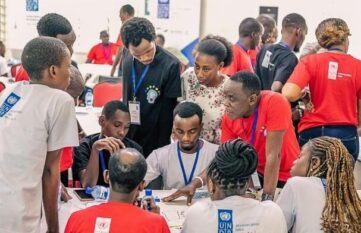© Accuray from Unsplash
openIMIS
openIMIS offers an opportunity to digitalize and efficiently manage health financing processes to improve access to Universal health coverage (UHC) and Universal Social Protection (USP). The Open Source software is used by health financing institutions, such as Ministries of Health, insurance funds or Non Government Organizations (NGOs).
Health organisations can manage patient data securely and get their services quickly paid for
In one example of an openIMIS implementation, data from beneficiaries, health service providers as well as insurance operators is connected through the system. Beneficiaries seeking healthcare can be easily identified at health facilities, and after providing the required care, the health facility can submit digital claims for reimbursement of the services. openIMIS allows the insurer to automatically verify and pay the health facility. The software, thus, sets the basis for an efficient financial flow between the insurer and health facility, while also ensuring that the sensitive data on beneficiaries and services remains within the managing institutions. openIMIS can be used in rural areas with limited connectivity, as it offers both online and offline functions through web and mobile phone apps. Because openIMIS is an open-source platform, it can be used, shared, improved and adapted to various contexts and needs in different countries without any licensing fees.
Project Example: openIMIS in Nepal
openIMIS is used to manage a variety of social protection schemes – from larger health and accident insurances in Tanzania and Nepal to smaller mutual base schemes in in Cameroon, Chad, and DRC.
In 2016, the GIZ supported the Health Insurance Board (HIB) in Nepal in deploying openIMIS in Nepal. The government of Nepal had introduced a Social Health Insurance, a scheme which provides health insurance with a benefit package of up to Rs. 100,000 (EUR 800) per family per year in exchange for a yearly contribution of Rs. 3500 (EUR 30) per family.
At the introduction of the scheme, an adapted version of the system in use in Tanzania and Cameroon, was deployed to facilitate all processes of the insurance scheme such as registration and claims management. After the establishment of a globally unified main version of the software, As it is available for free, it has been easy for the HIB to upgrade to the newer releases of openIMIS. Enrolment processes and registration to openIMIS have also been digitalized and made available on Android-based apps. These are used by enrolment assistants who can go to households to enrol people easily, and thus not requiring entire families to have to travel to an insurance office for enrollment. Health facilities have, moreover, benefitted greatly from the use of the software as it has reduced paperwork around claims management and payment.
As the software is open source, the adaptations and improvements made to the software are constantly shared within the openIMIS community by the IT department of the HIB, which can help other developers and organizations in developing and adapting their own versions of openIMIS. The GIZ Nepal’s support to the Health Sector Strategy programme (S2HSS) offers technical assistance to the IT team of the HIB.
The programme is supported by the openIMIS Initiative, which is a community of users, software developers, implementers and development partners. It is supported by 16 partner organizations. The initiative connects global and local communities, maintains and further develops the software, promotes open access, provides technical assistance, including capacity development, and generally aims at the expansion and continuous development of the software. The openIMIS Initiative was founded by the Swiss Agency for Development and Cooperation (SDC) and the BMZ and its coordination desk is hosted by GIZ.
openIMIS. is based on the global guidelines for digitalisation, the Principles for Digital Development.



